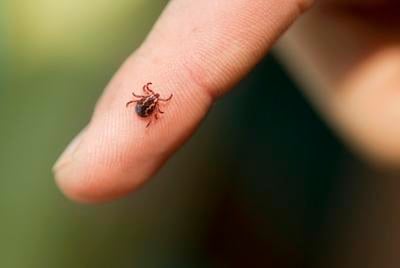Monica White serves as a cautionary tale.
She started feeling sick in 2006, for reasons that weren’t clear to her. She struggled to sleep and eat, and fatigue and pain overwhelmed her. Hospital visits ate into the family’s bank account.
“It took me 7 ½ years to get a proper diagnosis,” she says from her Poncha Springs home. “There just wasn’t any awareness here in Colorado about tick-borne diseases.”
The diagnosis was Lyme disease — the most dreaded of all illnesses bred by the bead-sized bloodsuckers lurking in the woods. She’s not the only Coloradan to claim the malady, though health officials report no sign of the Lyme-carrying blacklegged tick in the state and no confirmed cases of the disease originating here.
As a traveling, bushwhacking wildlife biologist, White says she could have contracted the disease elsewhere. But there’s a very clear, personal reason for her starting the nonprofit Colorado Tick-Borne Awareness Association.
Her message for outdoor hobbyists flocking to the wild: “It just doesn’t matter we’re in a low-incident state. People need to be aware.”
The data suggest incidents are indeed rare in El Paso County. According to the Colorado Department of Public Health and Environment, six tick-borne diseases were reported locally from 2013 through last year.
But the numbers can be “skewed,” says Jennifer House, the state public health veterinarian.
“First, an individual has to be exposed, they have to get sick, they have to go to a doctor, the doctor has to suspect one of these diseases, they then have to test for it, and then they have to report it,” she says. “So we know our data (are) going to be somewhat under-reported.”
The Centers for Disease Control and Prevention says tick-borne illnesses more than doubled nationwide from 2004 to 2016, including Rocky Mountain spotted fever and tularemia — both of which can be caught in Colorado.
Ticks are more notorious on the East Coast and in the Midwest, but their threat should not be ignored in the West, House says. “It’s very important that people understand we do have ticks in Colorado, and ticks that we have can carry diseases that will affect people and their pets.”
Here’s what to know:








(0) comments
Welcome to the discussion.
Log In
Keep it Clean. Please avoid obscene, vulgar, lewd, racist or sexually-oriented language.
PLEASE TURN OFF YOUR CAPS LOCK.
Don't Threaten. Threats of harming another person will not be tolerated.
Be Truthful. Don't knowingly lie about anyone or anything.
Be Nice. No racism, sexism or any sort of -ism that is degrading to another person.
Be Proactive. Use the 'Report' link on each comment to let us know of abusive posts.
Share with Us. We'd love to hear eyewitness accounts, the history behind an article.